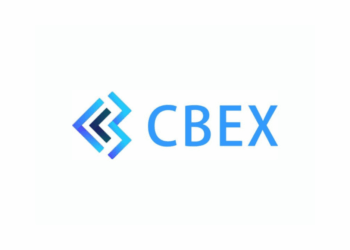Imagine a world where your unused bandwidth or storage space contributes to a global network, rewarding you for your contribution.
This is not science fiction; it’s the promise of DePIN.
What is DePIN?
DePIN stands for Decentralized Physical Infrastructure Network. It represents networks that use blockchain technology to decentralize the control and ownership of physical infrastructure.
Traditionally, infrastructure such as data networks, transportation systems, and electrical grids have been managed by centralized entities.
DePIN projects aim to shift this paradigm by enabling individuals to contribute their physical resources, thereby collectively owning and managing the network.
To better understand, consider Sarah, a tech enthusiast living in a suburban area. Sarah has a powerful computer with ample storage that she rarely uses.
Meanwhile, her friend Mike, a small business owner, struggles to find affordable and secure data storage solutions.
Enter Filecoin, a DePIN project that allows Sarah to rent out her spare storage in exchange for FIL tokens. Sarah earns extra income, and Mike gets a cost-effective, secure data storage solution.
Both benefit from participating in a decentralized network that thrives on community contributions.
Advantages of DePIN
DePIN’s decentralized nature inherently enhances security. Think of it as a spider web – if one strand breaks, the web remains intact. This distributed approach reduces susceptibility to single points of failure and targeted attacks.
DePINs can scale rapidly by leveraging distributed nodes that contribute resources to the network. Imagine a community garden: the more people who contribute, the more bountiful the harvest. Similarly, as more nodes join a DePIN, the network grows stronger and more capable.
Decentralized resource utilization reduces costs associated with building and maintaining infrastructure. For example, by participating in a DePIN project like Helium, you can set up a low-cost wireless network for IoT devices in your neighbourhood, bypassing the need for expensive infrastructure investments.
DePIN allows more participants to contribute and benefit, fostering a more equitable ecosystem. Picture a potluck dinner where everyone brings a dish.
The variety and abundance of food are far greater than what one person could provide alone. Similarly, DePIN creates a richer, more inclusive infrastructure by pooling resources.
Decentralized approaches encourage innovative solutions and adaptability to changing needs and technologies. Consider Storj, a DePIN project offering decentralized cloud storage. By encrypting and distributing data across a global network of nodes, Storj ensures both security and flexibility, adapting to the needs of its users.
DePIN Use Cases
DePIN projects are reshaping various fields, from decentralized finance to telecommunications. Here are some leading examples:
Arweave (AR): Arweave offers a decentralized storage solution focused on permanent data storage. Users pay a one-time fee in AR tokens to store data forever, leveraging a unique blockweave technology that ensures data redundancy and security.
Arweave’s approach to immutable data storage makes it ideal for archival purposes. AR tokens are traded on exchanges such as Binance.
Bittensor (TAO): A decentralized network integrating blockchain technology with artificial intelligence, enabling a network of machine learning models. The TAO token incentivizes nodes to contribute computational resources for AI computations.
Theta Network (THETA): A decentralized video delivery network that improves video streaming quality and reduces costs by utilizing users’ spare bandwidth and computing resources.
The network’s THETA token incentivizes users to share their resources, fostering a more efficient and cost-effective streaming ecosystem.
Internet Computer (ICP): A decentralized computing platform designed to be a comprehensive alternative to the traditional IT stack.
It aims to host software, services, and digital assets on a reinvented internet, with the ICP token facilitating network governance and transactions.
Akash Network (AKT): A decentralized cloud computing marketplace that connects users needing computing resources with those who have spare capacity.
Built on the Cosmos SDK, it offers a secure and efficient platform for deploying and managing applications. The AKT token facilitates transactions within the network.
What’s the Future for DePIN?
Despite its transformative potential, DePIN faces several challenges. Integrating blockchain with physical infrastructure requires significant expertise and robust platforms capable of handling security, scalability, and interoperability. Navigating diverse regional regulations governing physical and digital infrastructures can complicate deployment. Demonstrating clear benefits over traditional systems in terms of cost, efficiency, and usability is crucial for widespread adoption.
The future of DePIN, nonetheless, looks promising. Market predictions suggest substantial growth, potentially reaching a market size of $3.5 trillion by 2028. This expansion is driven by increasing demand for decentralized services such as high-quality streaming, data storage, and scalable infrastructure solutions.
DePIN projects are rapidly becoming integral to the blockchain and crypto space, with a combined market cap exceeding $25 billion.
These projects offer significant opportunities for technological innovation and investment, potentially revolutionizing how physical infrastructure is managed and monetized.
As the demand for decentralized solutions grows, DePIN projects are set to play an increasingly pivotal role in the future of digital infrastructure.
Just like Sarah and Mike, you too could be part of this decentralized revolution. By contributing your resources, you can help build a more resilient, equitable, and innovative world.
The future is decentralized, and it’s already here.
*Heath Muchena is the founder of Proudly Associated and author of Tokenized Trillions and Blockchain Applied.












